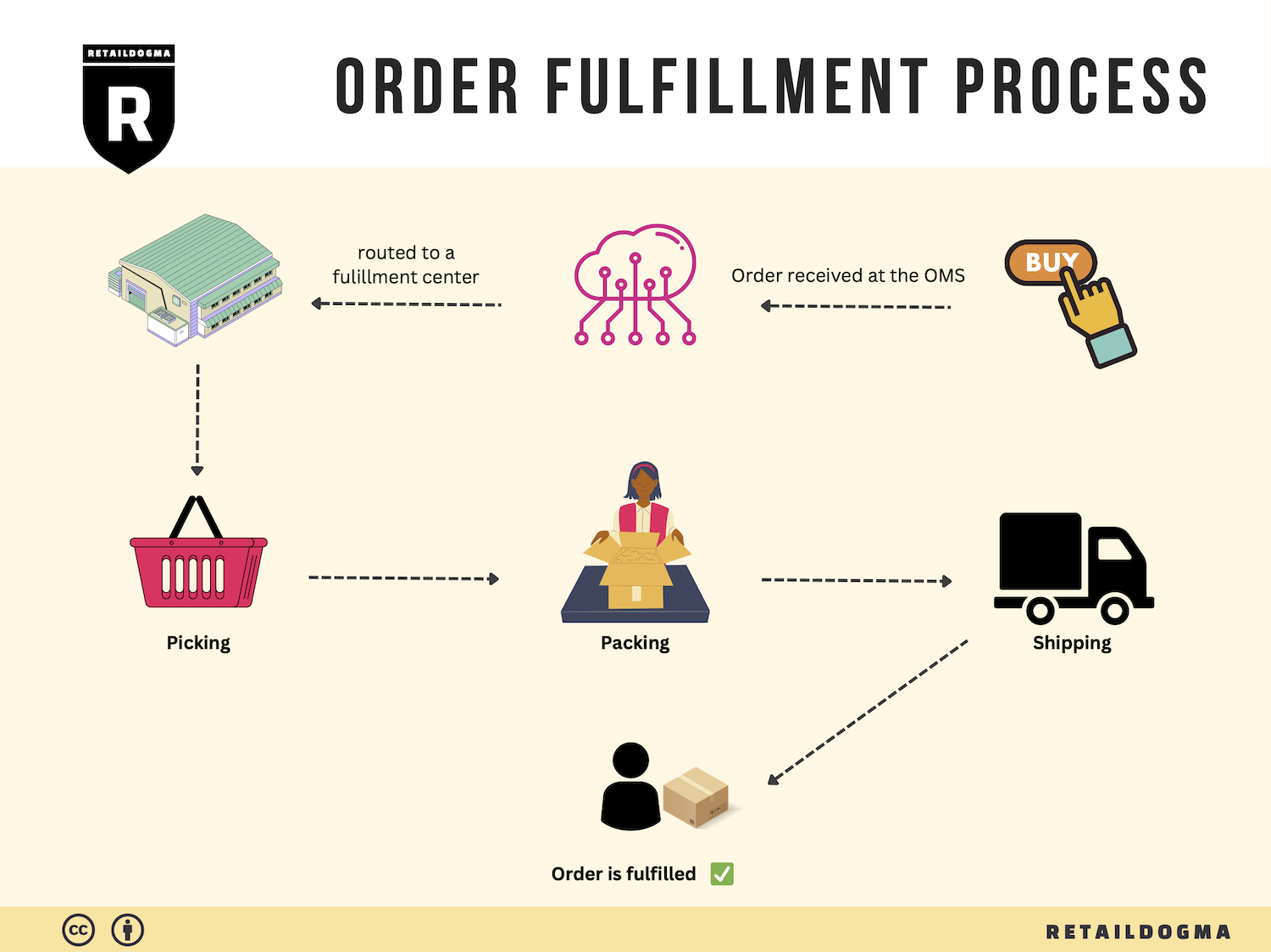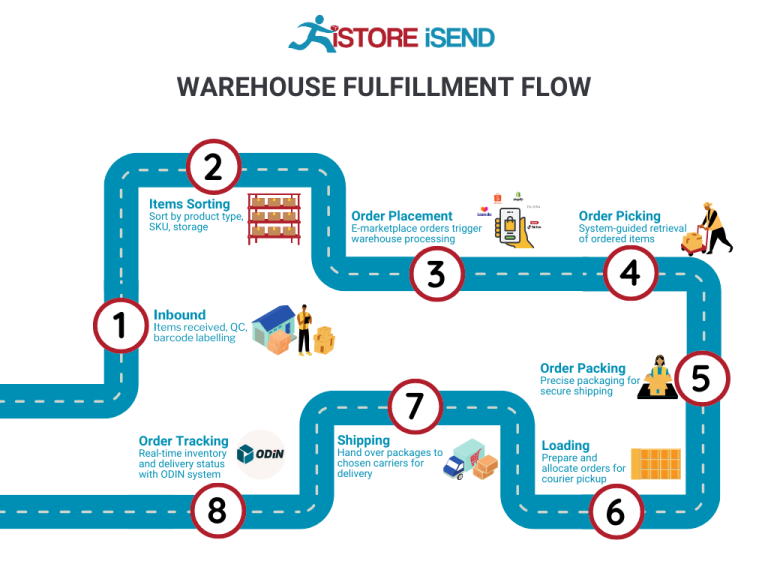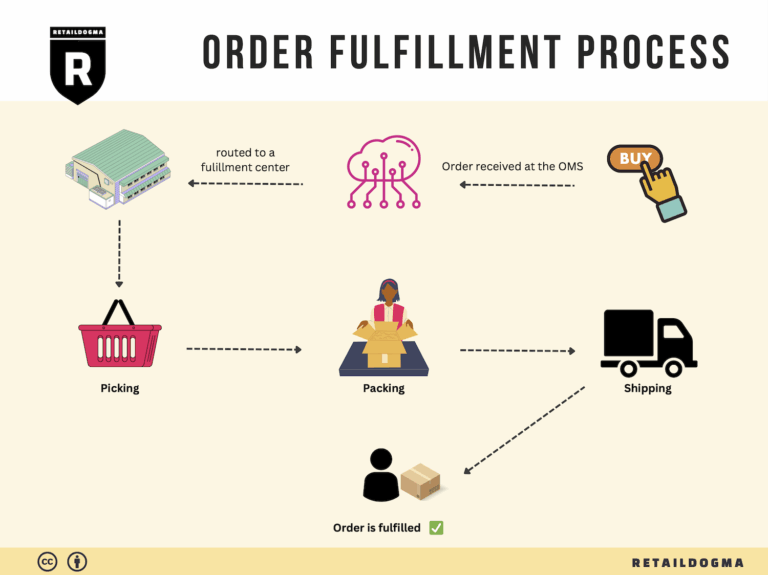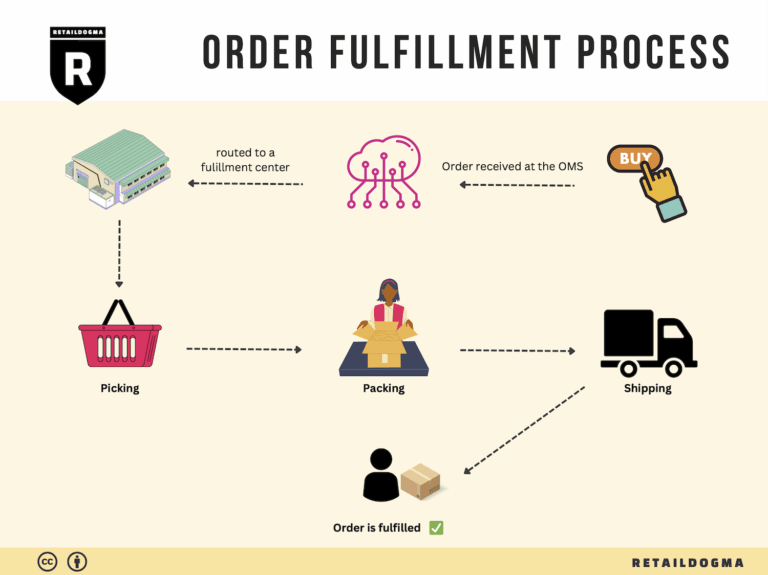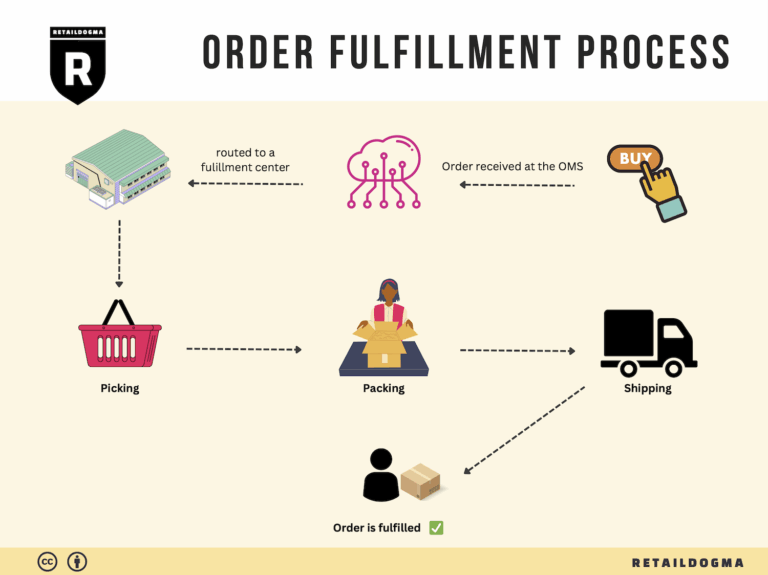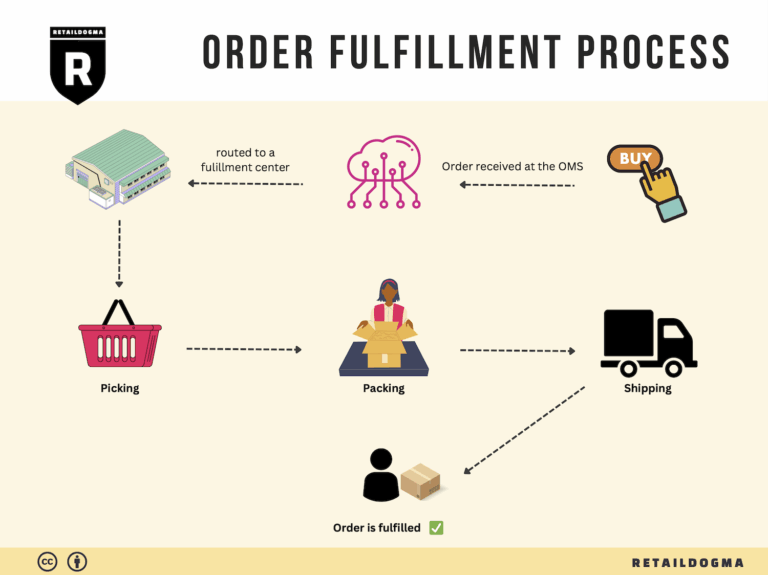What Is A Fulfillment Center? A Complete Guide (2025)
What is E-commerce Fulfillment? An Introduction for Growing Businesses
Understanding E-commerce Fulfillment: A Key to Scaling Your Business
As an e-commerce business owner, you may find yourself overwhelmed by the logistical challenges that arise as your sales grow. Packing and shipping orders can quickly become a daunting task, diverting your focus from what truly matters: building and marketing your brand. At its core, e-commerce fulfillment is the process of getting a product from your inventory to your customer’s doorstep. This process encompasses everything from order receipt to inventory management, packing, shipping, and even returns handling. Understanding this process is crucial for any growing business aiming to scale effectively.
This guide aims to demystify the complexities of e-commerce fulfillment by breaking down the different models available to you. We’ll explore options such as Third-Party Logistics (3PL) and Fulfillment by Amazon (FBA), each offering unique benefits tailored to various business needs. Whether you’re a small startup or an established brand looking to enhance your logistics, knowing the right model for your business can save you time and money.
Additionally, we will delve into the core services that fulfillment partners typically offer. These include inventory management, order processing, packing, shipping, and customer service. By understanding these services, you can better assess which fulfillment partner aligns with your operational needs.
Choosing the right fulfillment partner is a critical decision that can significantly impact your business’s efficiency and customer satisfaction. We will provide you with practical advice on what to look for in a partner, including key performance indicators, service level agreements, and technology integrations that can streamline your operations.
Pricing is another essential aspect of e-commerce fulfillment. We will break down how pricing models work, what factors influence costs, and how to evaluate the total cost of ownership when selecting a fulfillment solution.
The goal of this guide is to empower you with the knowledge to make informed decisions about your logistics strategy. By understanding the intricacies of e-commerce fulfillment, you can focus on scaling your business while ensuring that your customers receive their orders promptly and efficiently.
What You’ll Learn In This Guide
- What is E-commerce Fulfillment? An Introduction for Growing Businesses
- The Order Fulfillment Process: From ‘Buy’ Button to Customer’s Door
- Comparing Fulfillment Models: In-House vs. 3PL vs. Dropshipping
- A Deep Dive into Amazon FBA: Pros, Cons, and Who It’s For
- Core Services Offered by Fulfillment Centers
- How to Choose a Fulfillment Partner: A 6-Point Checklist
- Understanding Fulfillment Pricing: A Breakdown of Common Fees
- Frequently Asked Questions (FAQs) about Fulfillment
- Conclusion: Is Outsourcing Fulfillment the Right Move for Your Business?
- Important Disclaimer
The Order Fulfillment Process: From ‘Buy’ Button to Customer’s Door
1. Receiving Inventory
The first step in the order fulfillment process is receiving inventory. This involves the arrival of products at your fulfillment center from suppliers or manufacturers. Upon receipt, the inventory is inspected for quality and accuracy against purchase orders. This step is crucial because it ensures that the products meet your quality standards and are available for customer orders.
During this stage, businesses utilize a system of Stock Keeping Units (SKUs) to track and manage inventory items. Each SKU is a unique identifier for a specific product, allowing for easy tracking and management throughout the supply chain. Properly receiving and documenting inventory not only helps in maintaining accurate stock levels but also minimizes discrepancies that can affect order fulfillment later.
2. Warehouse Storage
Once inventory has been received and verified, it is then stored in a designated area within the fulfillment center. Effective warehouse storage is vital for maximizing space and ensuring that products are easily accessible for order fulfillment. This may involve organizing products by category, size, or frequency of sale, known as slotting.
The importance of efficient warehouse storage cannot be overstated. A well-organized warehouse reduces the time taken to locate products, ultimately speeding up the order picking process. Additionally, implementing a robust Warehouse Management System (WMS) can help businesses track inventory levels in real-time, manage stock movements, and optimize storage space, ensuring that inventory is always available for customer orders.
3. Order Picking
Order picking is the process of selecting the correct items from inventory to fulfill customer orders. Once an order is placed, a pick list is generated, detailing the items needed, their locations within the warehouse, and the quantities required. This step is crucial, as accuracy in order picking directly impacts customer satisfaction and reduces returns due to incorrect orders.
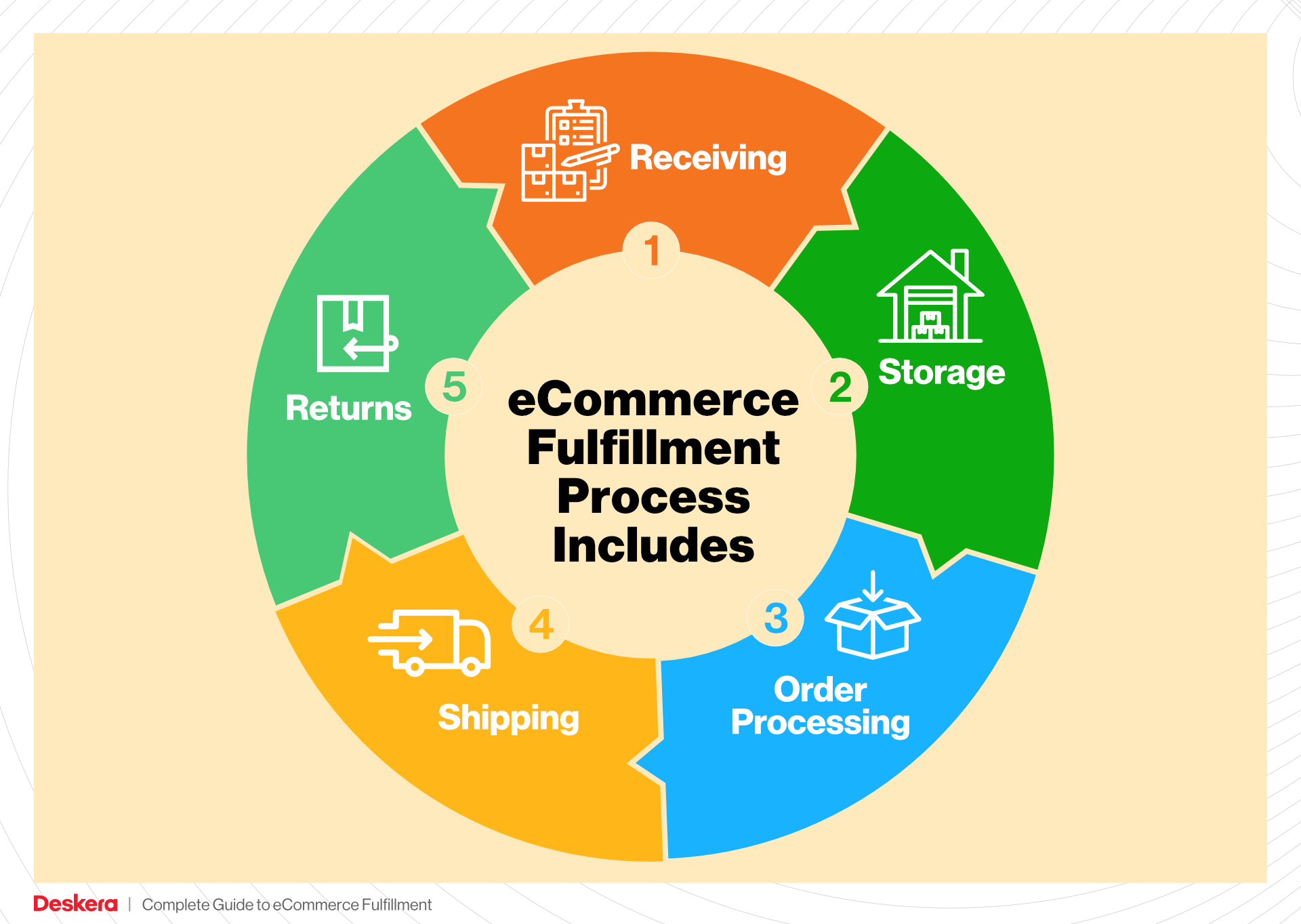
Businesses can adopt various picking methods, such as single order picking, batch picking, or zone picking, depending on their order volume and warehouse layout. The efficiency of this process can be enhanced through the use of technology, such as handheld scanners or automated picking systems, which help streamline operations and minimize human error. Effective order picking ensures that customers receive the correct products in a timely manner, boosting overall fulfillment performance.
4. Order Packing
After items have been picked, they proceed to the packing stage. Here, products are carefully packaged to ensure they arrive safely at the customer’s doorstep. This step is important not only for protecting the items during transit but also for creating a positive unboxing experience for customers.
During packing, businesses often implement packing slips, which provide a summary of the order contents. This serves as a final check to confirm that all items are included and correctly packed. Additionally, packaging materials should be chosen carefully to balance protection and cost-effectiveness. Using branded packaging can enhance customer perception and reinforce brand identity. Proper order packing is crucial for minimizing damage during shipping and ensuring that customers are satisfied with their purchase.
5. Shipping & Delivery
The final step in the order fulfillment process is shipping and delivery. Once orders are packed, they are labeled and handed over to a shipping carrier for delivery to the customer. This stage is critical, as timely and accurate delivery is a major factor in customer satisfaction.
Businesses typically use various shipping methods based on cost, speed, and destination. It’s important to provide customers with tracking information, allowing them to monitor their order status in real-time. Additionally, companies should consider offering multiple shipping options to cater to different customer preferences, such as expedited shipping for those who need their orders quickly.
Effective management of the shipping process can significantly enhance customer experience and retention. By analyzing shipping data, businesses can identify trends, optimize shipping routes, and adjust pricing strategies to improve efficiency and reduce costs. Ultimately, successful shipping and delivery create a seamless transition from the ‘Buy’ button to the customer’s door, solidifying customer trust and loyalty.
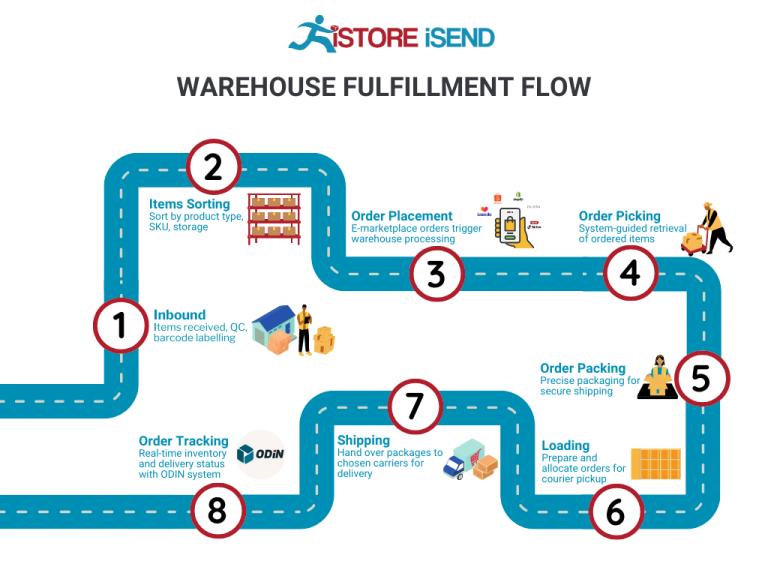
Comparing Fulfillment Models: In-House vs. 3PL vs. Dropshipping
Fulfillment Model Comparison
| Model | Who Handles Inventory | Best For (Business Stage) | Key Advantage | Key Disadvantage |
|---|---|---|---|---|
| In-House Fulfillment | Your own team | Startups to Mid-Sized | Full control over inventory and operations | Higher upfront costs and operational complexity |
| Third-Party Logistics (3PL) | Third-party provider | Growing to Established | Scalability and access to expertise | Less control over inventory and operations |
| Dropshipping | Supplier | Startups and Small Businesses | Low overhead and minimal risk | Lower profit margins and reliance on supplier reliability |
In-House Fulfillment
In-house fulfillment involves managing your own inventory and logistics operations within your business. This model is ideal for startups and mid-sized businesses that prioritize control over their inventory, branding, and customer experience. By handling fulfillment internally, businesses can streamline their processes and ensure that every product is shipped according to their standards. One of the primary advantages of this model is the complete oversight it offers, allowing businesses to respond quickly to changes in demand or inventory levels. However, the disadvantages include higher upfront costs associated with warehousing, staffing, and technology investments, as well as the operational complexities that come with managing logistics. As a business grows, the need for scalability can strain resources, making it essential to evaluate whether in-house fulfillment remains the best option.
Third-Party Logistics (3PL)
Third-party logistics (3PL) providers offer a comprehensive solution for businesses looking to outsource their fulfillment processes. This model is particularly beneficial for companies in the growth stage that require flexibility and scalability without the burden of managing logistics themselves. A 3PL partner can handle various aspects, including warehousing, order processing, shipping, and even returns management. The key advantage of using a 3PL is the ability to tap into their expertise, technology, and established networks, which can lead to improved efficiency and reduced shipping costs. However, one of the main drawbacks is the reduced control over inventory and fulfillment processes, which can lead to challenges in maintaining brand consistency and customer satisfaction if the 3PL does not meet expectations. Businesses must carefully vet potential 3PL partners to ensure they align with their operational goals and customer service standards.
Dropshipping
Dropshipping is a fulfillment model where businesses sell products without holding inventory. Instead, when a customer places an order, the business purchases the item from a third-party supplier, who then ships it directly to the customer. This model is particularly appealing for startups and small businesses looking to minimize overhead costs and financial risk, as it eliminates the need for inventory management and warehousing. The primary advantage of dropshipping is the low barrier to entry and the ability to offer a wide range of products without the associated costs of inventory. However, dropshipping also presents significant challenges, including lower profit margins due to reliance on supplier pricing and potential issues with fulfillment speed and product quality. Furthermore, businesses are at the mercy of their suppliers, which can lead to customer dissatisfaction if products are delayed or not up to standard. As a result, entrepreneurs must conduct thorough research and establish strong relationships with reliable suppliers to mitigate these risks.
In summary, each fulfillment model presents distinct advantages and disadvantages, and the choice largely depends on the business’s size, growth stage, and operational goals. Understanding these models can help e-commerce business owners make informed decisions that align with their strategic objectives, ultimately leading to more efficient operations and enhanced customer satisfaction.
A Deep Dive into Amazon FBA: Pros, Cons, and Who It’s For
What is Fulfillment by Amazon (FBA)?
Fulfillment by Amazon (FBA) is a service offered by Amazon that allows e-commerce businesses to store their products in Amazon’s fulfillment centers. Amazon takes care of storage, packaging, and shipping, while also providing customer service and handling returns. This service enables sellers to leverage Amazon’s vast logistics network and customer base, making it easier to scale their businesses.
When a customer orders a product, Amazon picks, packs, and ships it directly to them. Sellers benefit from Amazon’s infrastructure, which includes their advanced warehousing, shipping capabilities, and customer service, allowing them to focus on other aspects of their business, such as marketing and product development.
How FBA Works
-
Set Up Your FBA Account: Sellers need to create an Amazon seller account and enroll in the FBA program. This involves linking their seller account to FBA, which can be done through the Amazon Seller Central dashboard.
-
Create Product Listings: Once enrolled, sellers can create product listings for the items they want to sell. Each product must meet Amazon’s guidelines and policies.
-
Prepare and Ship Products to Amazon: Sellers must prepare their products according to Amazon’s packaging and labeling requirements. Once prepared, products are shipped to Amazon’s fulfillment centers.
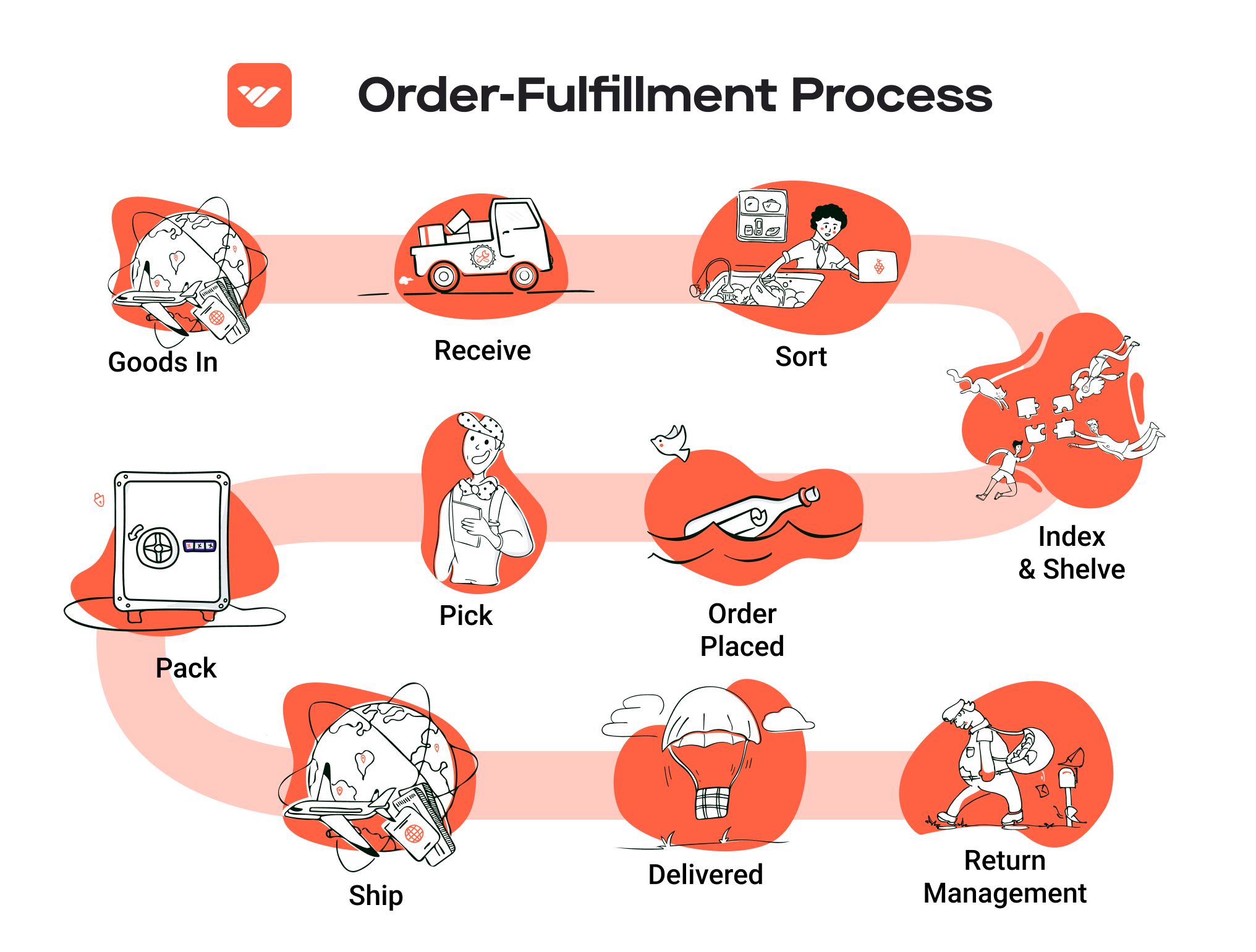
-
Storage and Fulfillment: Amazon stores the products in their warehouses. When an order is placed, Amazon handles the picking, packing, and shipping of the products to the customer.
-
Customer Service and Returns: Amazon provides customer service for FBA orders, including handling returns. This alleviates some of the operational burdens from the seller.
-
Payment: After the sale is made, Amazon deducts their fees from the sale price and transfers the remaining balance to the seller’s account.
Pros of Using FBA
Prime Eligibility
One of the most significant advantages of FBA is that products become eligible for Amazon Prime. This can lead to increased visibility and sales, as millions of Prime members prefer to purchase items that offer fast, free shipping.
Customer Trust
Amazon is a well-established brand with a reputation for excellent customer service. By using FBA, sellers can leverage this trust. Customers are often more likely to buy from an FBA seller than from one who fulfills orders independently, especially if they are unfamiliar with the seller.
Multi-Channel Fulfillment
FBA supports multi-channel fulfillment, allowing sellers to use Amazon’s logistics for orders placed on other platforms such as eBay or their own e-commerce websites. This can streamline operations and reduce shipping costs.
Scalability
FBA allows businesses to scale quickly. Sellers can increase their product offerings without worrying about the complexities of storage, packing, and shipping.
Simplified Logistics
Outsourcing logistics to Amazon simplifies the supply chain for many businesses. Sellers can focus on product sourcing, marketing, and customer engagement instead of managing fulfillment processes.
Cons of Using FBA
High Fees
FBA comes with various fees, including storage fees and fulfillment fees. These costs can add up, especially for low-margin products. Sellers must carefully consider their pricing strategy to ensure profitability after fees.
Strict Inventory Rules
Amazon has stringent inventory management policies. Sellers must adhere to guidelines regarding inventory levels and product returns, which can be challenging for businesses with fluctuating demand or seasonal products.
Commingling Risks
FBA uses a commingling system, where products from different sellers are stored together. This can lead to issues if a seller’s product is damaged or if a customer receives the wrong item. While Amazon has policies to address these issues, they can still pose a risk to the seller’s brand.
Limited Control
By using FBA, sellers relinquish some control over the fulfillment process. This can include aspects like packaging, shipping speed, and customer service interactions, which may not always align with a seller’s brand standards.
Inventory Management Challenges
Sellers need to manage their inventory levels proactively to avoid long-term storage fees or stockouts. This requires careful forecasting and planning, which can be particularly challenging for new businesses or those with seasonal sales.
Who is FBA Best For?
FBA is best suited for e-commerce businesses looking to scale rapidly and who can benefit from Amazon’s extensive logistics network. It is particularly advantageous for:
-
Small to Medium-Sized Enterprises (SMEs): Companies that lack the resources to manage their own fulfillment operations can leverage FBA to provide high-quality shipping and customer service.
-
Sellers with High Volume: Businesses that sell a large volume of products may find that the cost savings and efficiencies gained through FBA outweigh the associated fees.
-
New Sellers: Entrepreneurs entering the e-commerce space can utilize FBA to establish trust with customers and take advantage of Amazon’s vast reach without significant upfront investment in logistics.
-
Brands Seeking National Reach: Brands looking to expand their market presence can use FBA to reach customers across the country without needing to set up their own fulfillment network.
In conclusion, while FBA offers numerous advantages, including increased visibility and simplified logistics, it also comes with challenges such as fees and inventory management requirements. Businesses should weigh these pros and cons carefully to determine if FBA aligns with their operational goals and growth strategies.
Core Services Offered by Fulfillment Centers
Inventory Management & Warehousing
Inventory management and warehousing form the backbone of any effective fulfillment center. This service involves the systematic tracking and storage of products, ensuring that stock levels are maintained at optimal levels. Fulfillment centers utilize advanced inventory management systems (IMS) that provide real-time visibility into stock quantities, locations, and movements.
Benefits:
1. Accuracy and Efficiency: With real-time data tracking, businesses can minimize discrepancies in inventory counts, which can lead to stockouts or overstock situations. This accuracy translates to better customer satisfaction as orders are fulfilled correctly and promptly.
-
Space Optimization: Fulfillment centers are designed to maximize storage space, allowing for efficient organization of products. This means that even businesses with large inventories can benefit from strategically managed warehousing without the overhead costs of maintaining their own facilities.
-
Scalability: As a business grows, so does its inventory. Fulfillment centers can scale their storage solutions to accommodate increased product lines or seasonal spikes in demand, allowing businesses to focus on growth without worrying about storage limitations.
Pick and Pack Services
Pick and pack services involve the process of selecting items from inventory (picking) and preparing them for shipment (packing). This is often a labor-intensive task that requires precision and speed, as it directly affects order fulfillment times and customer satisfaction.
Benefits:
1. Speedy Fulfillment: Fulfillment centers have streamlined processes and trained personnel that significantly reduce the time taken from order receipt to shipment. This efficiency is crucial in today’s e-commerce landscape, where customers expect fast delivery.
-
Quality Control: Many fulfillment centers implement quality checks during the pick and pack process to ensure that the correct items and quantities are sent out. This reduces the likelihood of returns and enhances customer trust.
-
Custom Packaging Options: Fulfillment centers often provide various packaging solutions that can be tailored to a business’s brand, enhancing the unboxing experience for customers. This level of customization can improve customer loyalty and encourage repeat purchases.
Kitting and Assembly
Kitting and assembly services involve grouping different products together into a single package or constructing a product from multiple components. This service is particularly useful for businesses that sell bundles, gift sets, or products that require assembly prior to shipping.
Benefits:
1. Enhanced Product Offerings: By using kitting services, businesses can create unique product offerings that appeal to customers. For instance, a brewery could offer a mixed pack of different beers, enhancing the customer experience and increasing average order values.
-
Streamlined Operations: Outsourcing kitting and assembly to a fulfillment center allows businesses to focus on their core operations, such as marketing and product development, rather than the logistics of assembling products.
-
Cost-Effectiveness: Fulfillment centers typically have the infrastructure and workforce to manage kitting efficiently, which can lead to cost savings for businesses. This is especially beneficial for small to medium-sized enterprises that may not have the resources to handle these tasks in-house.
Returns Management (Reverse Logistics)
Returns management, often referred to as reverse logistics, is the process of handling returned products. This service is critical for e-commerce businesses, as returns are an inevitable part of the online shopping experience. Effective returns management helps businesses manage customer dissatisfaction while recapturing value from returned items.
Benefits:
1. Customer Satisfaction: A straightforward and efficient returns process can enhance customer satisfaction and trust. Fulfillment centers can provide easy return labels, track returns, and process refunds quickly, making it easier for customers to shop with confidence.
-
Inventory Recovery: Fulfillment centers can inspect returned items and determine whether they can be restocked, refurbished, or need to be discarded. This ability to recover value from returns minimizes losses and optimizes inventory levels.
-
Data Insights: Returns management can provide valuable insights into customer behavior and product performance. Analyzing return data can help businesses identify trends, such as common reasons for returns, which can inform product improvements and marketing strategies.
In conclusion, leveraging the core services offered by fulfillment centers can significantly enhance an e-commerce business’s efficiency, customer satisfaction, and scalability. By outsourcing these critical logistics functions, businesses can focus on growth and innovation while ensuring that their fulfillment processes are handled expertly.
How to Choose a Fulfillment Partner: A 6-Point Checklist
Location & Warehouse Network
Why It’s Important:
The geographic location of your fulfillment partner’s warehouses can significantly impact shipping times and costs. A strategically placed fulfillment center can ensure faster delivery to your customers, especially if they are concentrated in specific regions.
Questions to Ask:
– Where are your warehouses located, and how does that align with my customer base?
– Do you have multiple locations to enable regional shipping advantages?
– How do you handle shipping to remote areas or states with restrictions, such as alcohol shipping regulations?
Technology & Integrations
Why It’s Important:
In today’s digital landscape, a robust technology platform is crucial for seamless order processing, inventory management, and real-time tracking. Your fulfillment partner should offer systems that integrate easily with your e-commerce platform, enabling efficient operations.
Questions to Ask:
– What technology do you use for inventory management and order fulfillment?
– Can your system integrate with my current e-commerce platform and other software tools (e.g., CRM, ERP)?
– Do you provide real-time tracking and reporting features? How accessible is this data for my team?
Specializations (e.g., Cold Storage, Oversized Items)
Why It’s Important:
If your business involves specific product types, such as perishables or oversized items, you need a fulfillment partner that specializes in those areas. Specialized facilities can offer the necessary conditions for product safety and compliance.
Questions to Ask:
– What types of products do you specialize in fulfilling?
– Do you have the capabilities for cold storage or handling fragile items?
– How do you ensure compliance with regulations regarding specific product types, especially for alcohol or food items?
Scalability & Capacity
Why It’s Important:
As your business grows, your fulfillment needs will change. A capable fulfillment partner should be able to scale operations to match your growth without compromising service quality.
Questions to Ask:
– How do you manage peak seasons or unexpected surges in order volume?
– What is your current capacity, and how quickly can you scale to accommodate growth?
– Can you provide examples of how you’ve successfully scaled with other clients?
Pricing and Contracts
Why It’s Important:
Understanding the pricing structure and contract terms is essential for budgeting and financial planning. Transparency in pricing helps avoid unexpected costs that can arise from hidden fees or complicated contract clauses.
Questions to Ask:
– What is your pricing model (e.g., per order, per item, storage fees)?
– Are there any additional fees I should be aware of (e.g., for returns, packing materials)?
– What is the length of the contract, and what are the terms for cancellation or changes?
Customer Support & Reviews
Why It’s Important:
Effective customer support is crucial in the fast-paced world of e-commerce. Your fulfillment partner should offer reliable support to address any issues quickly. Additionally, researching reviews and testimonials can provide insights into the partner’s reliability and service quality.
Questions to Ask:
– What customer support options do you offer (e.g., phone, email, live chat)?
– What is your average response time for customer inquiries or issues?
– Can you provide references or testimonials from current or past clients?
Conclusion
Choosing the right fulfillment partner is a critical decision that can impact your e-commerce business’s efficiency and customer satisfaction. By following this checklist, you can ensure that you select a partner who not only meets your current needs but also supports your long-term growth. Each of these points plays a vital role in the overall success of your logistics strategy, so take the time to evaluate potential partners thoroughly.
Understanding Fulfillment Pricing: A Breakdown of Common Fees
Initial Setup Fees
Initial setup fees are one-time charges that cover the costs associated with onboarding your business to a fulfillment center. This may include account creation, system integration, and the establishment of inventory management protocols. Depending on the complexity of your operations and the technology involved, these fees can range from a few hundred to several thousand dollars.
When calculating initial setup fees, consider the following factors:
– System Integration: If you require custom software solutions or API integrations with your existing e-commerce platform, expect higher fees.
– Inventory Input: The time and labor required to input initial inventory data into the fulfillment system can also impact costs.
– Training and Support: Some fulfillment centers offer training for your staff on using their systems, which can add to initial costs.
Receiving Fees
Receiving fees are charged for the process of accepting and processing incoming inventory shipments. These fees typically cover the labor and resources needed to unload products, inspect them for quality, and enter them into the inventory system.
Receiving fees can be calculated in several ways:
– Per Hour: Some fulfillment centers charge based on the time taken to receive and process a shipment.
– Per Pallet or Carton: Others may charge a flat fee for each pallet or carton received, which can be beneficial for larger shipments.
– Minimum Charges: Many fulfillment centers have minimum receiving fees, ensuring that smaller shipments still cover basic operational costs.
Storage Fees (per pallet/bin)
Storage fees are ongoing charges for the physical space your products occupy within the fulfillment center. These fees can be calculated on a monthly basis and are typically based on the volume of your inventory, measured in pallets or bins.
Key considerations for storage fees include:
– Type of Storage: Some centers offer different rates for ambient, refrigerated, or climate-controlled storage, which can affect your costs significantly.
– Seasonal Fluctuations: Many fulfillment centers implement tiered pricing, where costs can increase during peak seasons (e.g., holidays) when demand for storage space is higher.
– Long-term Storage Fees: Some centers impose additional fees for inventory that remains in storage for an extended period, incentivizing businesses to manage their stock levels effectively.
Pick & Pack Fees (per item/order)
Pick and pack fees are charged for the labor involved in selecting products from inventory and preparing them for shipment. This process includes picking items from shelves, packing them into boxes, and labeling them for delivery.
Calculating pick and pack fees can vary:
– Per Item: Many fulfillment centers charge a fee for each item picked and packed, which can be beneficial for businesses with diverse product offerings.
– Per Order: Some facilities may charge a flat fee per order regardless of the number of items, which can simplify budgeting for businesses with high-volume orders.
– Additional Services: Extra charges may apply for special requests, such as gift wrapping or including promotional materials.
Shipping Fees
Shipping fees are the costs incurred to transport your products from the fulfillment center to the customer. These fees can vary widely based on shipping carriers, delivery speed, package weight, and destination.
When calculating shipping fees, keep in mind:
– Carrier Rates: Most fulfillment centers partner with multiple carriers (e.g., UPS, FedEx) and offer rates based on negotiated contracts. It’s wise to review these options to find the best deal.
– Dynamic Pricing: Some fulfillment centers use dynamic pricing models that adjust based on real-time factors like fuel costs or demand surges.
– Free Shipping Thresholds: Many businesses offer free shipping over a certain order value to encourage larger purchases, which can impact your overall shipping strategy.
Tips for Getting an Accurate Quote
To ensure you receive an accurate quote from a fulfillment center, consider the following tips:
- Detail Your Needs: Provide a comprehensive overview of your business, including expected order volumes, product types, and any special handling requirements.
- Request Itemized Quotes: Ask for a breakdown of all potential fees, including setup, receiving, storage, pick and pack, and shipping. This transparency will help you understand the true cost of fulfillment.
- Compare Multiple Providers: Don’t settle for the first quote you receive. Comparing multiple fulfillment centers can reveal significant differences in pricing and service offerings.
- Inquire About Discounts: Ask about volume discounts or promotional rates, especially if you anticipate scaling your operations.
- Understand Terms and Conditions: Clarify any minimum fees, long-term storage charges, or other conditions that may apply to your agreement.
By following these guidelines, you can better navigate the complexities of fulfillment pricing and make informed decisions that support your business’s growth.
Frequently Asked Questions (FAQs) about Fulfillment
1. What is the Bruery Tasting Room & Fulfillment Center?
The Bruery Tasting Room & Fulfillment Center is a dedicated space in Placentia, California, where customers can enjoy a variety of award-winning craft beers while also facilitating the efficient processing and shipping of online orders. Customers can pick up their orders directly from the Fulfillment Center, enhancing convenience and customer satisfaction.
2. What are the fulfillment options available at The Bruery?
The Bruery offers several fulfillment options:
– In-Store Pick-Up: Customers can place online orders and pick them up at the Fulfillment Center with 24 hours’ notice.
– Shipping: The Bruery ships orders to most U.S. states, excluding a few. Orders typically ship within 1-2 business days via UPS and Worldwide Express.
– Cellaring: Available exclusively for members, this service allows The Bruery to hold your beer for up to 14 months until you are ready to pick it up or arrange shipping.
3. How does The Bruery handle shipping?
Shipping orders are processed quickly, generally within 1-2 business days. The Bruery ships to a wide range of states, and shipping costs are calculated dynamically based on weight and destination. Members can also benefit from complimentary shipping on orders over $200, excluding certain items.
4. What is the difference between a warehouse and a fulfillment center?
A warehouse primarily serves as a storage facility for goods, focusing on inventory management and bulk storage. In contrast, a fulfillment center specializes in processing orders, including picking, packing, and shipping products directly to customers. Fulfillment centers are geared towards efficiency in order processing to enhance customer satisfaction and streamline logistics.
5. What is a Third-Party Logistics Provider (3PL)?
A Third-Party Logistics Provider (3PL) is a service that allows businesses to outsource their logistics operations, including warehousing, fulfillment, and distribution. Using a 3PL can help businesses scale efficiently by leveraging the provider’s expertise, technology, and resources without needing to invest heavily in their own logistics infrastructure.
6. How much do fulfillment services cost?
Fulfillment service costs can vary widely based on several factors, including the volume of orders, the complexity of the fulfillment process, and specific service offerings. Common costs include storage fees, picking and packing fees, shipping costs, and additional services like returns management. It’s essential to obtain quotes from multiple providers to understand the pricing structure that best suits your business needs.
7. Can I track my order once it has been shipped?
Yes, customers will receive tracking information via email once their order has been shipped. This allows you to monitor the delivery status of your order in real-time, providing peace of mind and transparency throughout the shipping process.
8. What should I do if my order is damaged during shipping?
If your order arrives damaged, you should contact The Bruery’s customer service immediately. They will guide you through the process of reporting the damage and may require photos of the damaged items for verification. Depending on the situation, they may offer a replacement or a refund.
9. Are there any membership benefits related to fulfillment?
Yes, members of The Bruery’s Preservation Society enjoy various benefits related to fulfillment, including exclusive access to special releases, the ability to cellar beers for up to 14 months, and discounted shipping rates on orders. Membership also provides early notifications about new releases and events.
10. What are the hours for the Bruery Tasting Room & Fulfillment Center?
The Bruery Tasting Room in Placentia is open from 12 PM to 10 PM on weekdays, extending to 11 PM on Fridays and Saturdays, and closing at 8 PM on Sundays. For pick-up orders, please ensure to place your request in advance to facilitate smooth processing at the Fulfillment Center.
Conclusion: Is Outsourcing Fulfillment the Right Move for Your Business?
Evaluating the Benefits of Outsourcing Fulfillment
Outsourcing your fulfillment can be a transformative decision for your e-commerce business, offering several key benefits that can significantly enhance your operational efficiency. Firstly, by utilizing a fulfillment service, you can save valuable time. This allows you to redirect your focus towards strategic initiatives such as product development, marketing, and customer engagement—areas that directly impact growth.
Secondly, scalability is a major advantage. As your business experiences fluctuations in demand, a fulfillment partner can easily adjust to your needs without the overhead of managing extra staff or facilities. This flexibility ensures that you can meet customer expectations without compromising service quality, especially during peak seasons.
Moreover, leveraging the expertise of a fulfillment service can lead to improved accuracy and efficiency in order processing. These partners often possess advanced technology and logistics systems that can enhance your shipping capabilities, reduce errors, and ultimately lead to higher customer satisfaction.
However, the success of outsourcing fulfillment hinges on selecting the right partner. Look for a provider that aligns with your business goals, understands your product demands, and offers the level of customer service you desire. A misalignment can lead to operational hiccups and customer dissatisfaction, negating the benefits of outsourcing.
As you contemplate this strategic move, take the time to audit your current shipping processes. Analyze your pain points and determine whether a fulfillment partner could alleviate these challenges and support your growth trajectory. By assessing your logistics needs, you can make a more informed decision on whether outsourcing fulfillment is the right next step for your business.
Important Disclaimer
⚠️ Important Disclaimer
The information in this guide is for educational purposes. Fulfillment services, pricing, and platform features change frequently. Always conduct your own due diligence and consult with providers directly before making business decisions.
